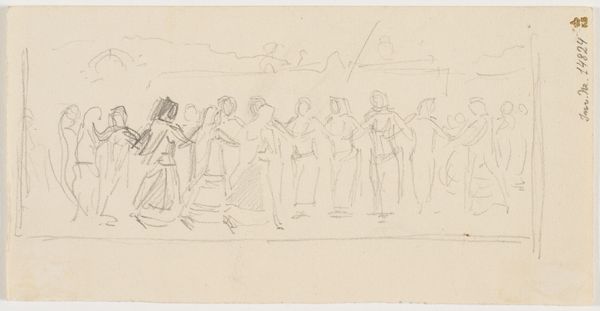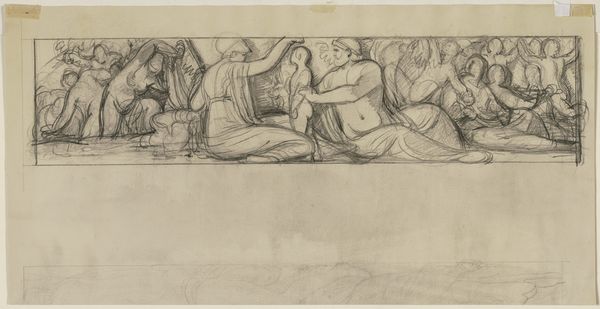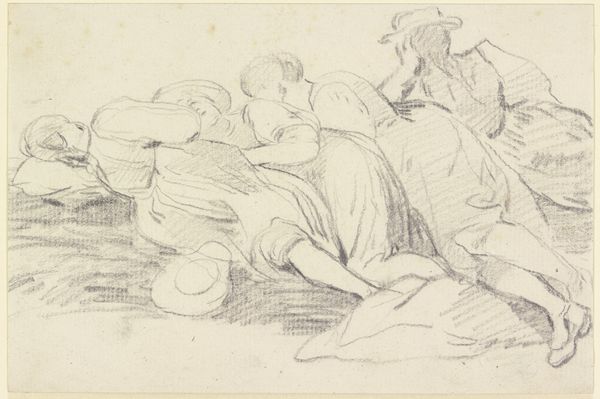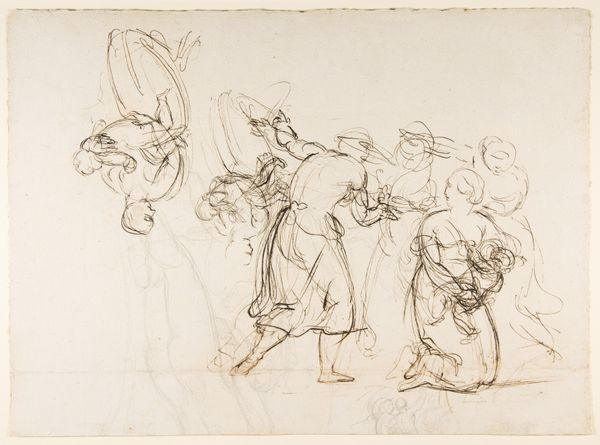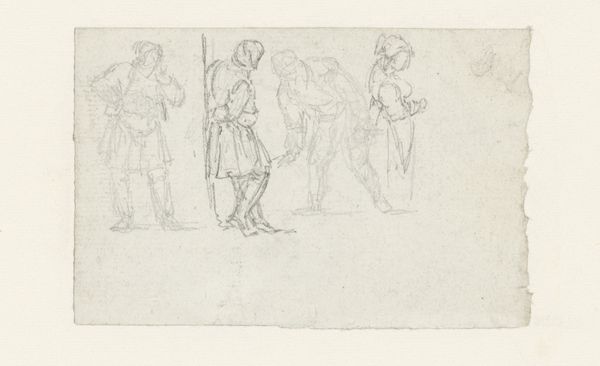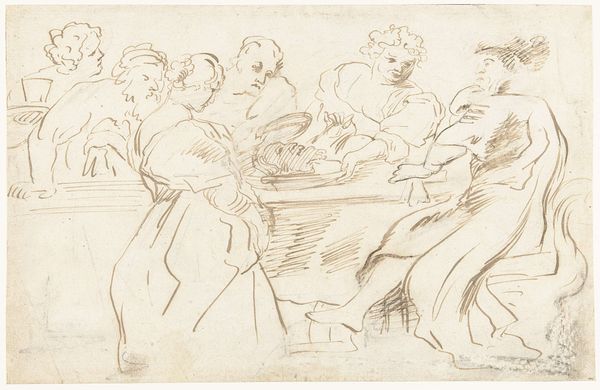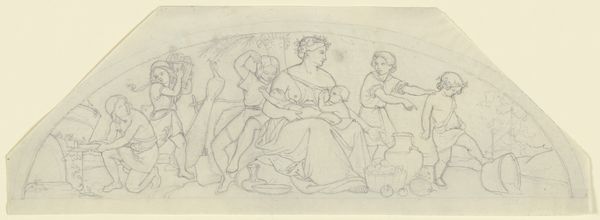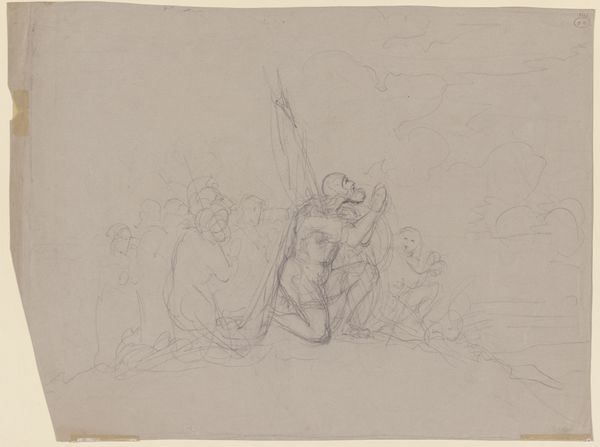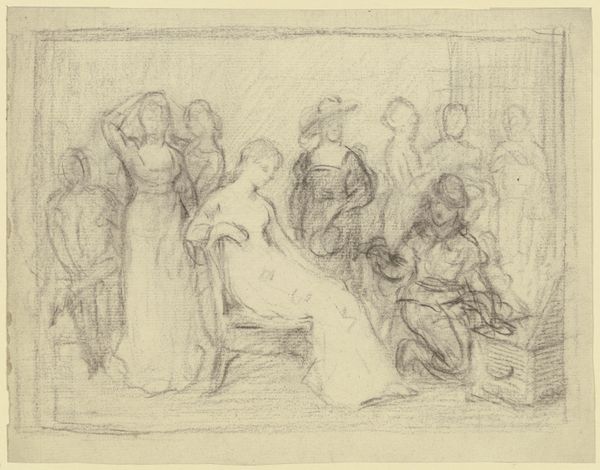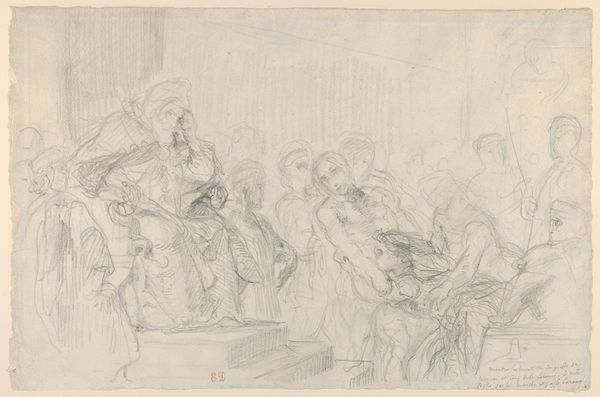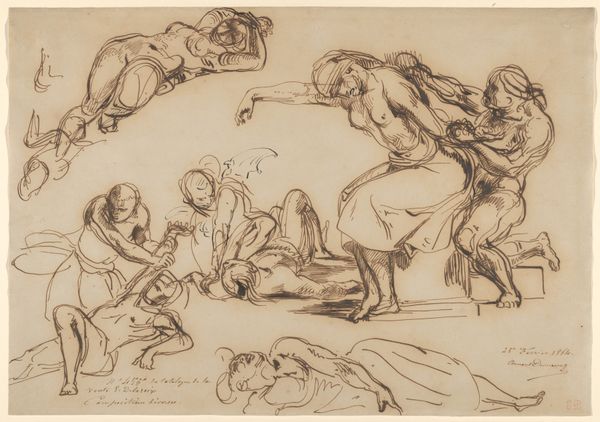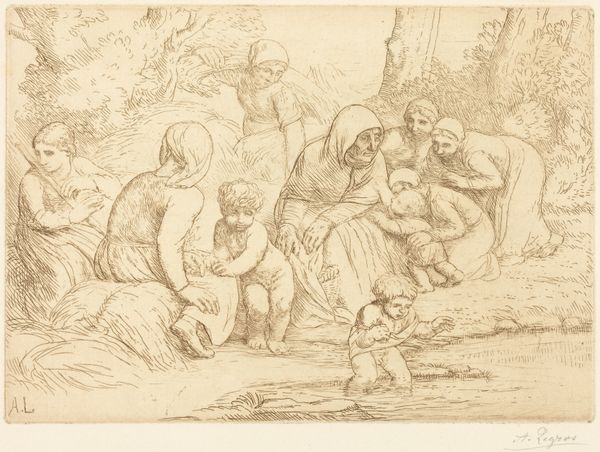
drawing, paper, pencil
#
drawing
#
classical-realism
#
figuration
#
paper
#
pencil
#
history-painting
Copyright: Public Domain
Editor: This is "Mythological Scene," a pencil drawing on paper, presumably by Bernhard Neher the Younger. It feels like a preliminary sketch for something larger. The linear quality emphasizes the contours of the figures, which gives them a kind of weight despite the lightness of the medium. How should we interpret the drawing in its historical context? Curator: Consider the economics of artistic production in Neher's time. Pencil drawings on paper were a far cry from frescoes or oil paintings commissioned by wealthy patrons. We see the means of production laid bare: readily available, inexpensive materials enabling Neher to explore his vision. Does this inherent accessibility democratize art-making? Editor: That's interesting. So you're suggesting the *material* reality of pencil and paper challenges traditional art historical focus on wealthy patronage? Curator: Exactly. Moreover, observe the draftsmanship. The visible lines and corrections evidence a process of constant refinement. It invites us to think about artistic labor as a physical endeavor—the repeated strokes, the pressure applied. Does it matter whether this was a preparatory sketch for a 'finished' product? Or does the value reside precisely in seeing the act of creation? Editor: I see what you mean. Looking at it now, it seems like it values the labor process more than just representing mythological scenes. Is this maybe more about art for art’s sake? Curator: It could be! And that shift has ramifications throughout the art world—how art is funded, made, displayed, and who gets access. We see the raw, material reality that underpins the idealised mythological scene. Consider, too, how readily accessible drawings like these became through mass production and printing – altering the nature of viewership and cultural capital. Editor: This has completely changed how I view the drawing, going beyond just identifying its classical realism style, and now seeing it through a more socio-economic lens. Curator: Indeed, a materialist perspective forces us to reckon with the 'stuff' of art.
Comments
No comments
Be the first to comment and join the conversation on the ultimate creative platform.
